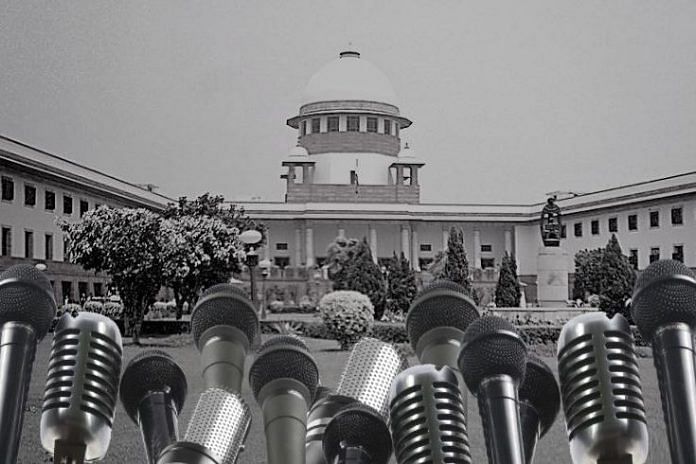The judiciary crawls back every time issues of internal reforms come up.
The Kenyan Supreme Court recently invalidated the country’s presidential election and called for fresh elections. Chief Justice David Maraga read out the operative part of the ruling and said the full text will be put out in 21 days.
For a ruling of such significance, the 21-day delay in accessing the fine print of the judgement would have been a nightmare for a journalist reporting the courts. Except in Kenya, the pronouncement of the ruling was being live telecast and news outlets had even streamed over 10 hours of arguments in the case on YouTube.
Although we inherited the same colonial British legal system and its flaws, Kenyan citizens got to watch their judges possibly change the course of their nation. But our constitutional courts are still seeking public opinion on whether journalists must be seated at the back of the court rooms or in between the judges and the lawyers.
This week the Delhi high court sought suggestions from public on how to regulate reporting of court proceedings, and the Bombay high court barred reporters from sitting in its central court room.
Also read: Questions raised over judiciary’s bid to ‘regulate’ media coverage of courts
Even if a solution is found to the seating arrangement, there is another vexing issue of whether electronic devices can be permitted in courts. There are more serious questions that the Delhi high court-appointed ‘expert committee’ asks which touch upon fundamental rights. And answers are expected in a binary “yes-no” format.
Even if one is to overlook that the committee has not one journalist on board that it seeks to regulate, it is possibly the least effective exercise in “balancing free press, fair trial and integrity of judicial proceedings”.
If the Delhi high court is indeed serious about curbing instances of misreporting, it should open the courts and its judges, and embrace more transparency. The government has suggested televising our courts on more than one occasion but the judiciary has crawled back like it mostly does when it comes to internal reforms.
There is no prudent answer to why constitutional courts must be exempted when state legislative assemblies, Lok Sabha and the Rajya Sabha proceedings can be telecast live. The United States, Britain, Australia and even China telecast proceedings of their supreme courts.
A recent order of the Supreme Court directing the installation of CCTV cameras in courts of two districts of each state is a start. But even this is without an audio recording and cannot be accessed by public.
For courts that don’t keep transcripts of proceedings and where entry is restricted, media is the biggest keeper of records. Flip through a few case histories on the court website and you will notice that the most orders only contain a line on the next date of hearing without any context. The public would never know the context if not for journalists.
Citizens have a right to know all that a judge speaks in court, including their camaraderie with lawyers, remarks, oral observations, the occasional yawning and yelling.
If a report goes horribly wrong, the threat of contempt of court is always looming on the journalist and the media organisation. But to frame uninformed rules restricting journalists without law degrees or an arbitrarily decided number for years of experience is a serious threat to free speech that the same courts must protect.
If courts are determined that something needs to be fixed urgently to improve its coverage by media, the microphones that our judges don’t use might be a good place to start.



